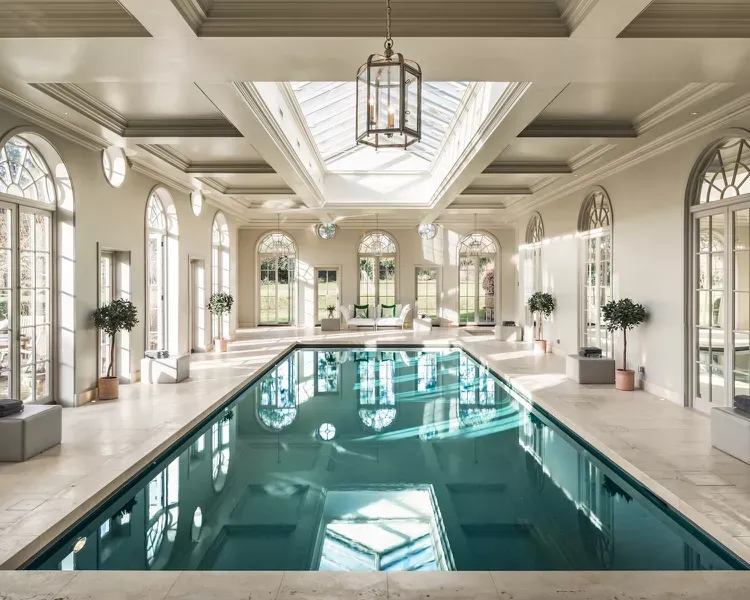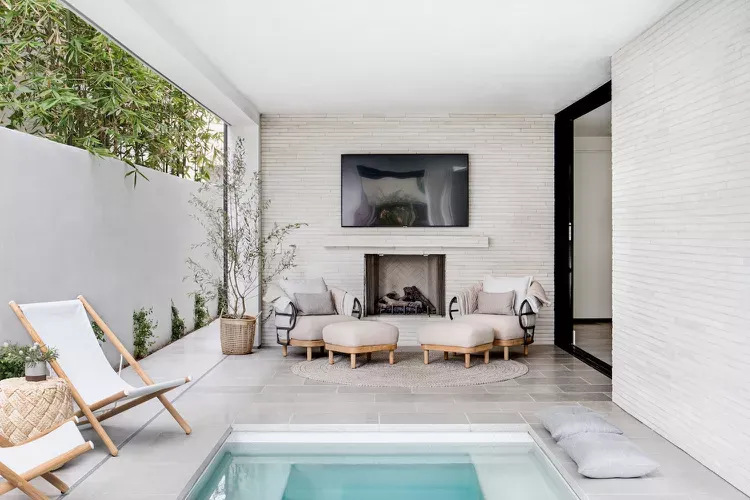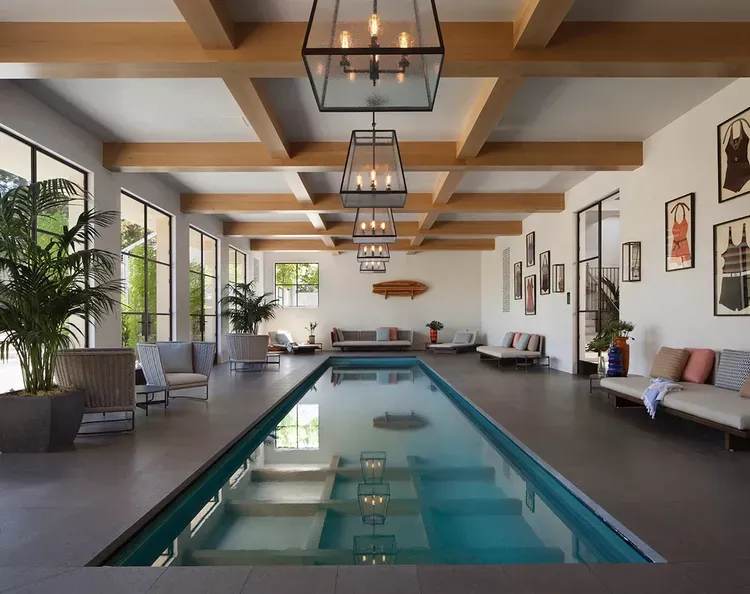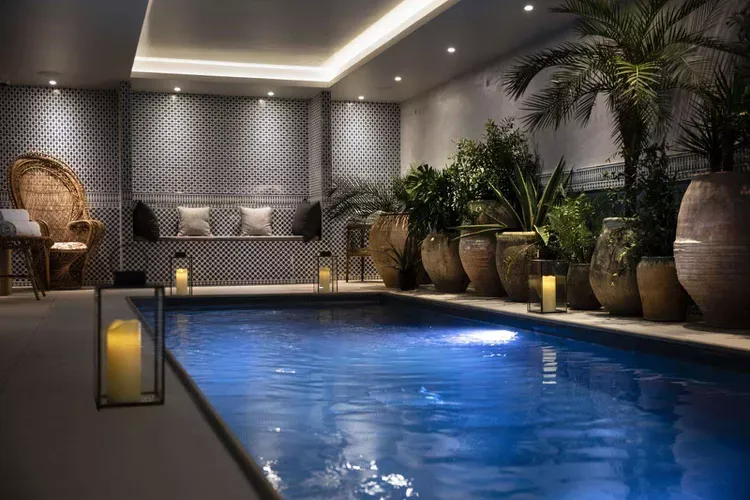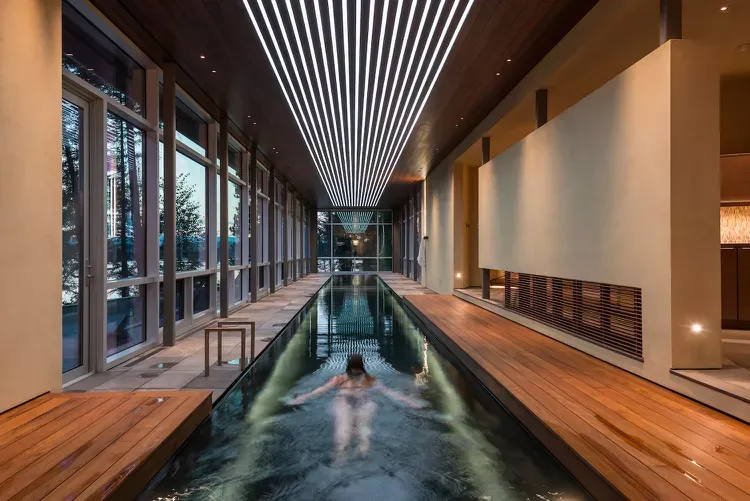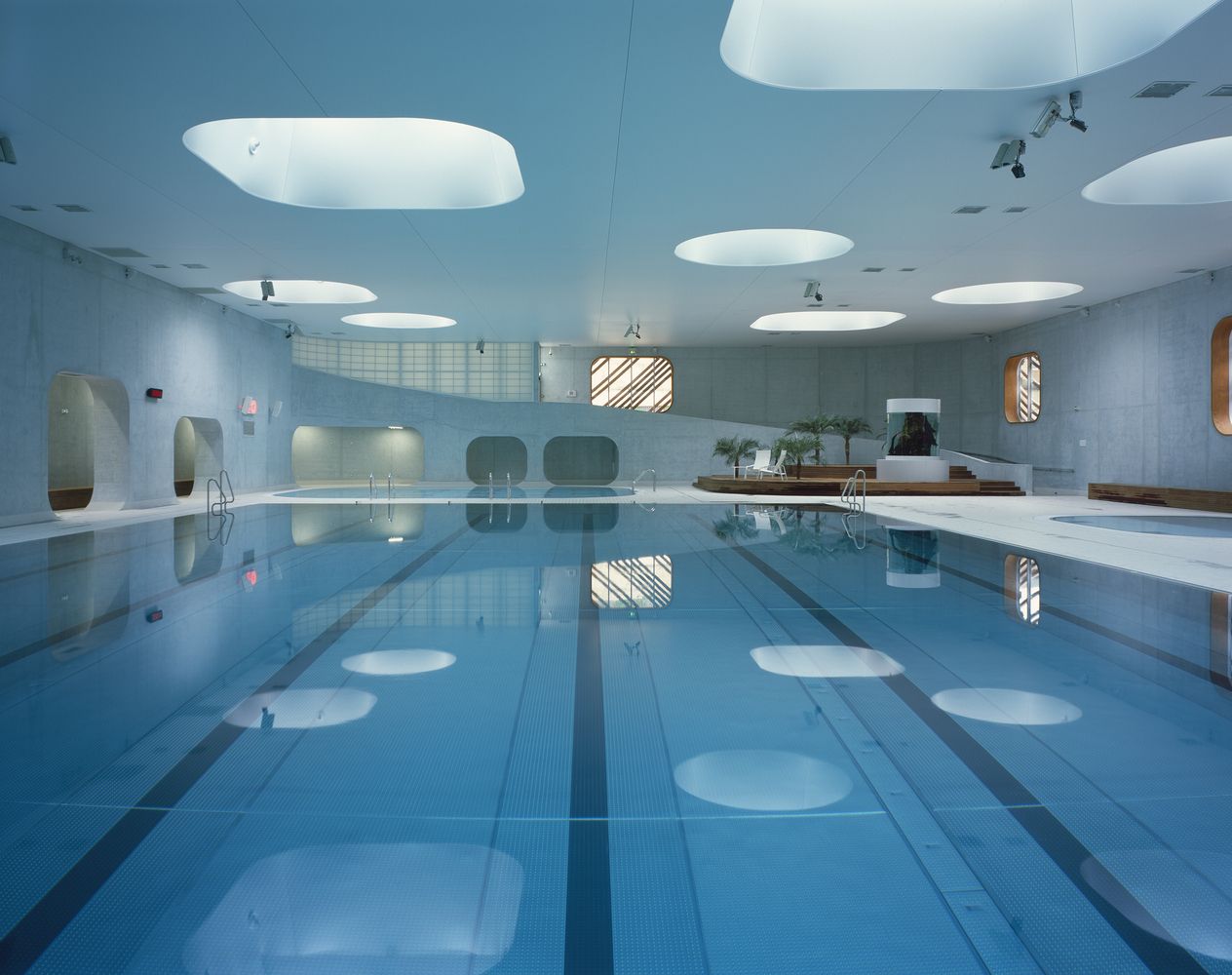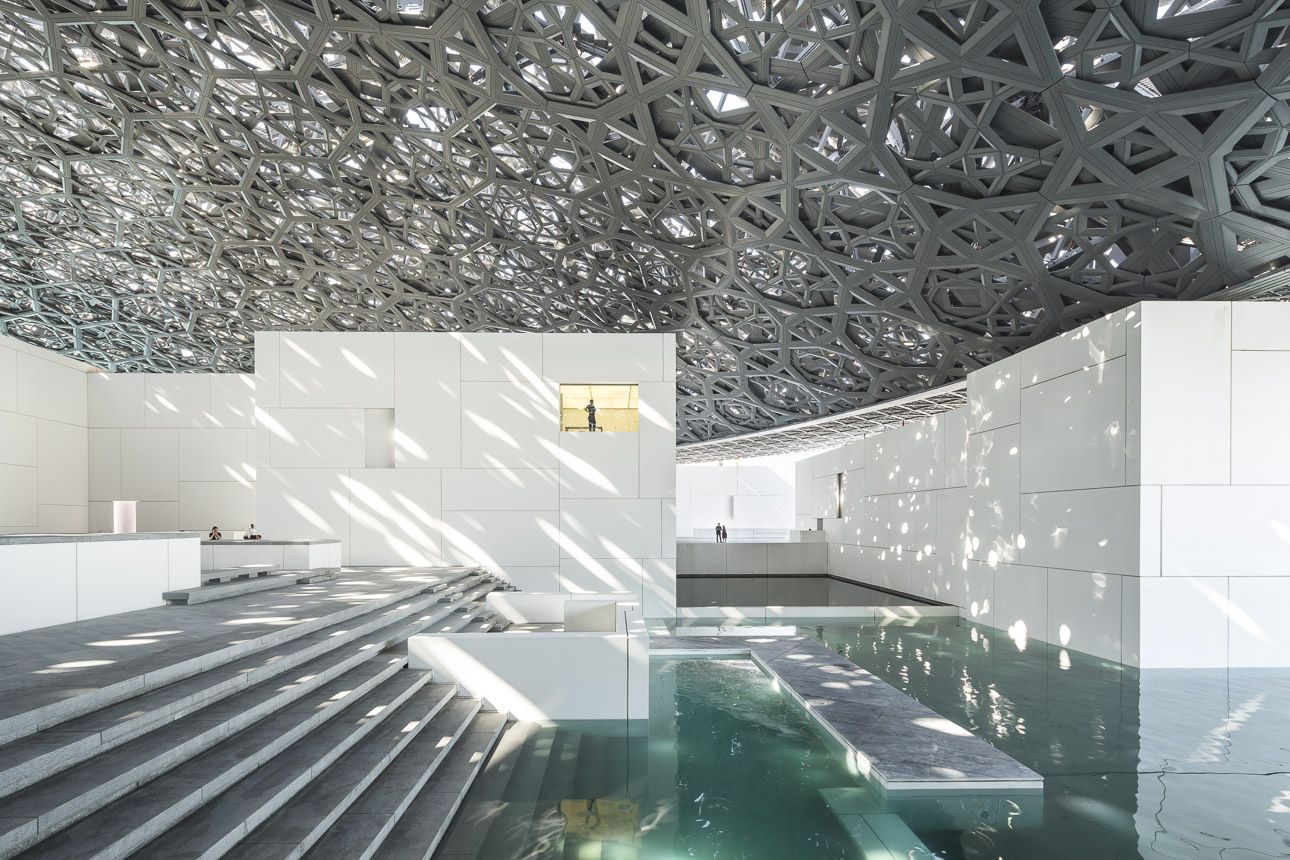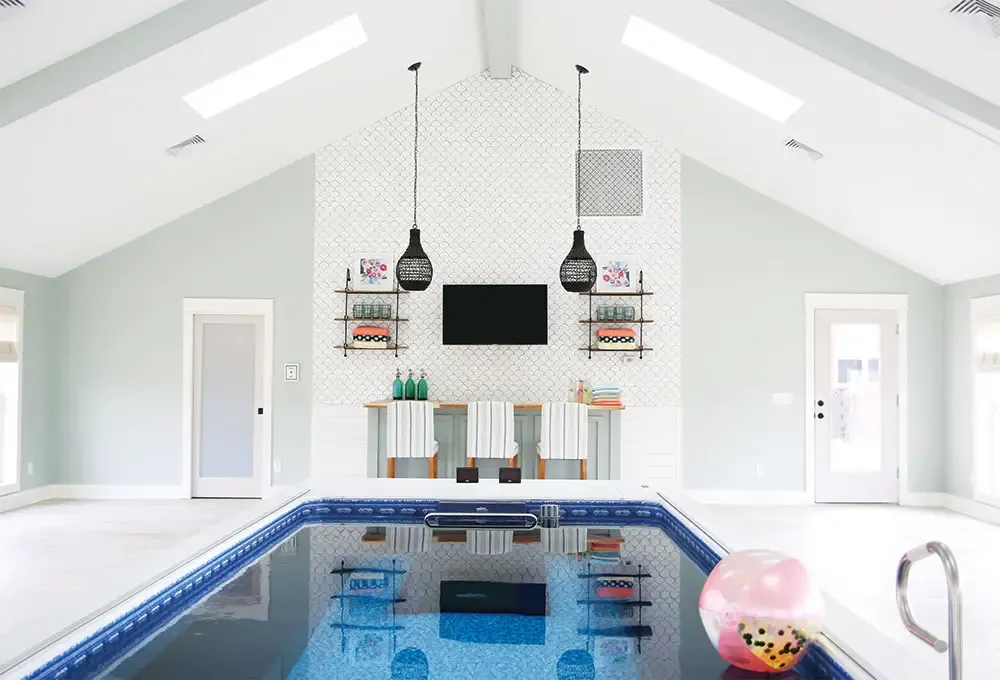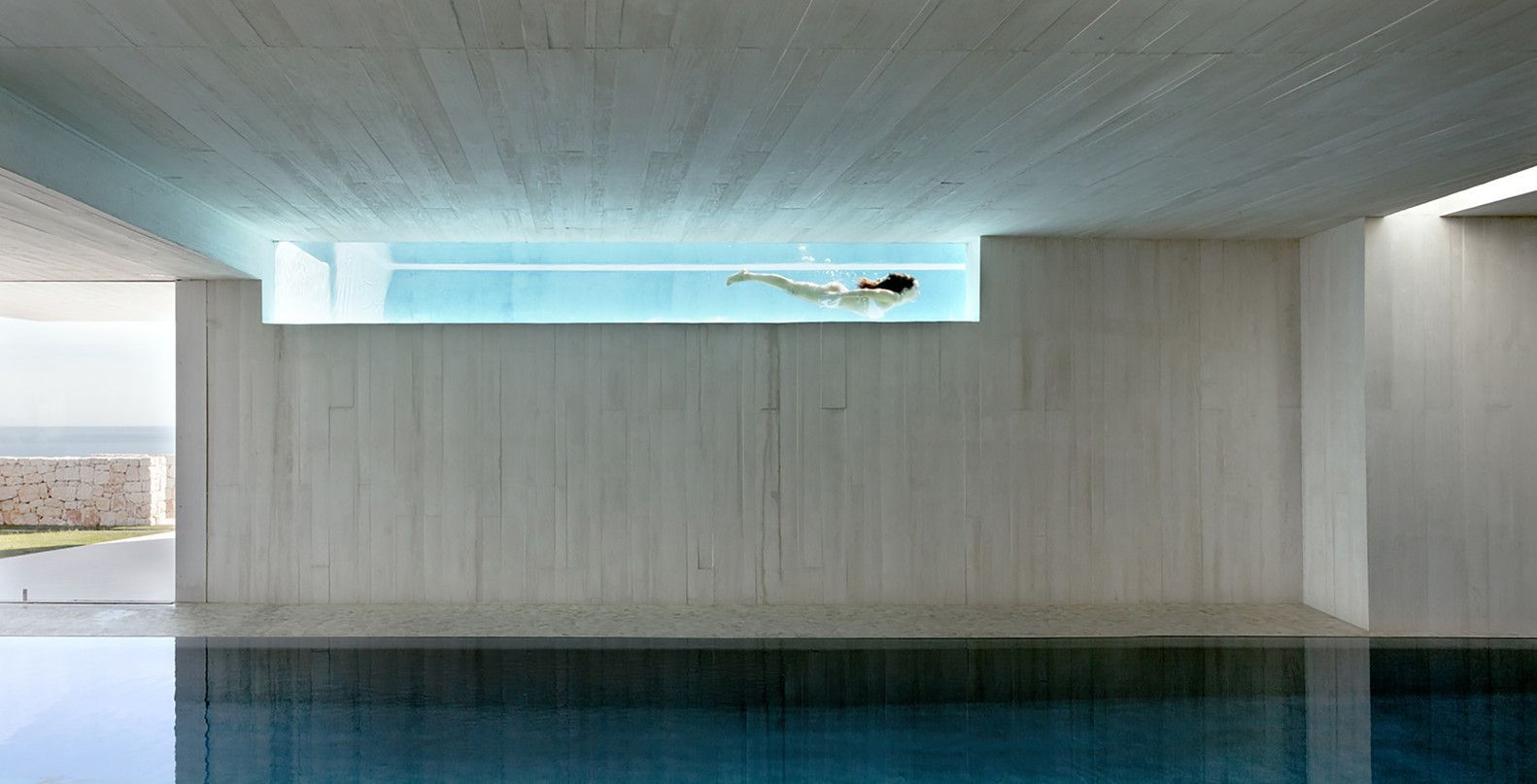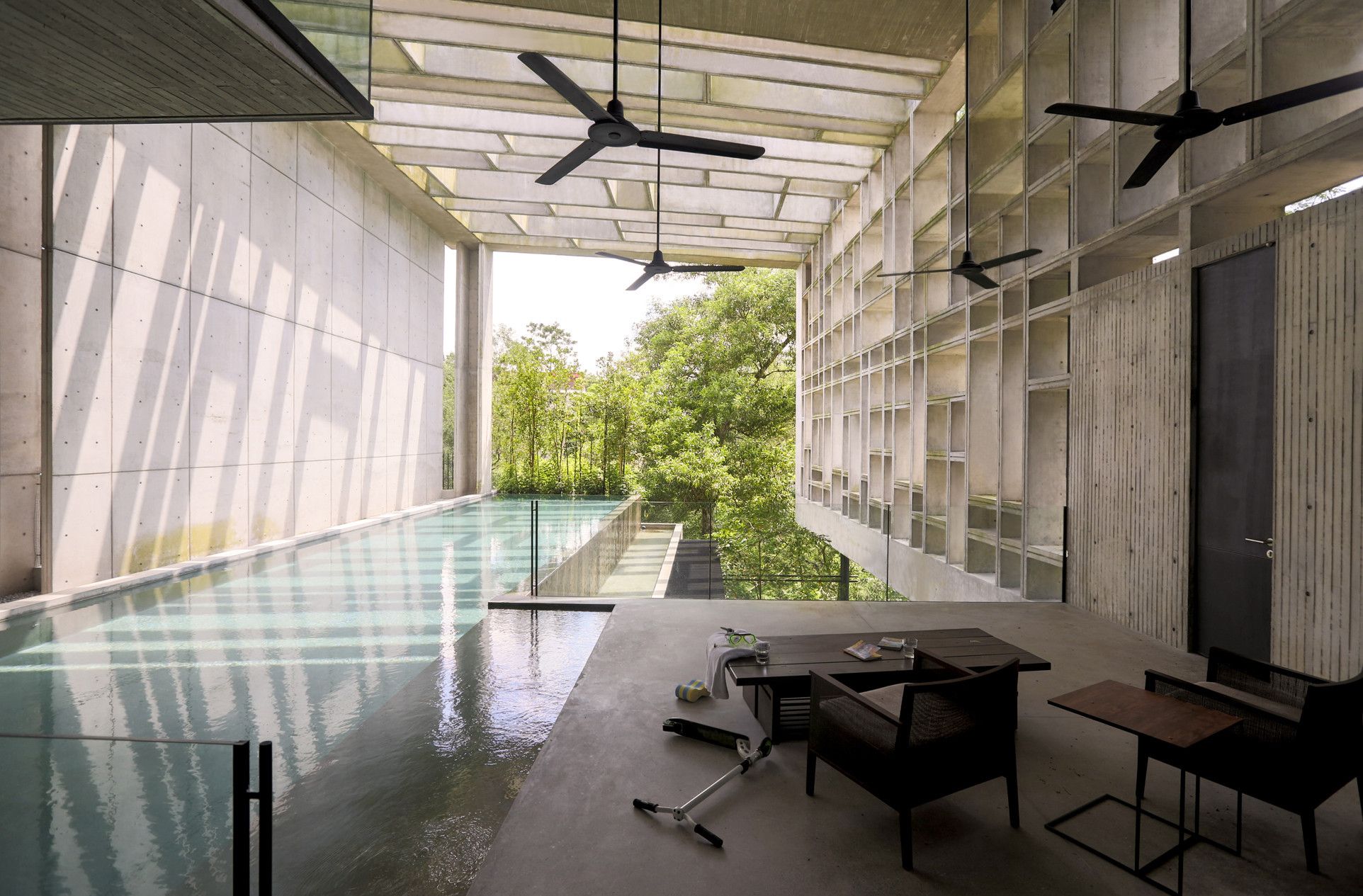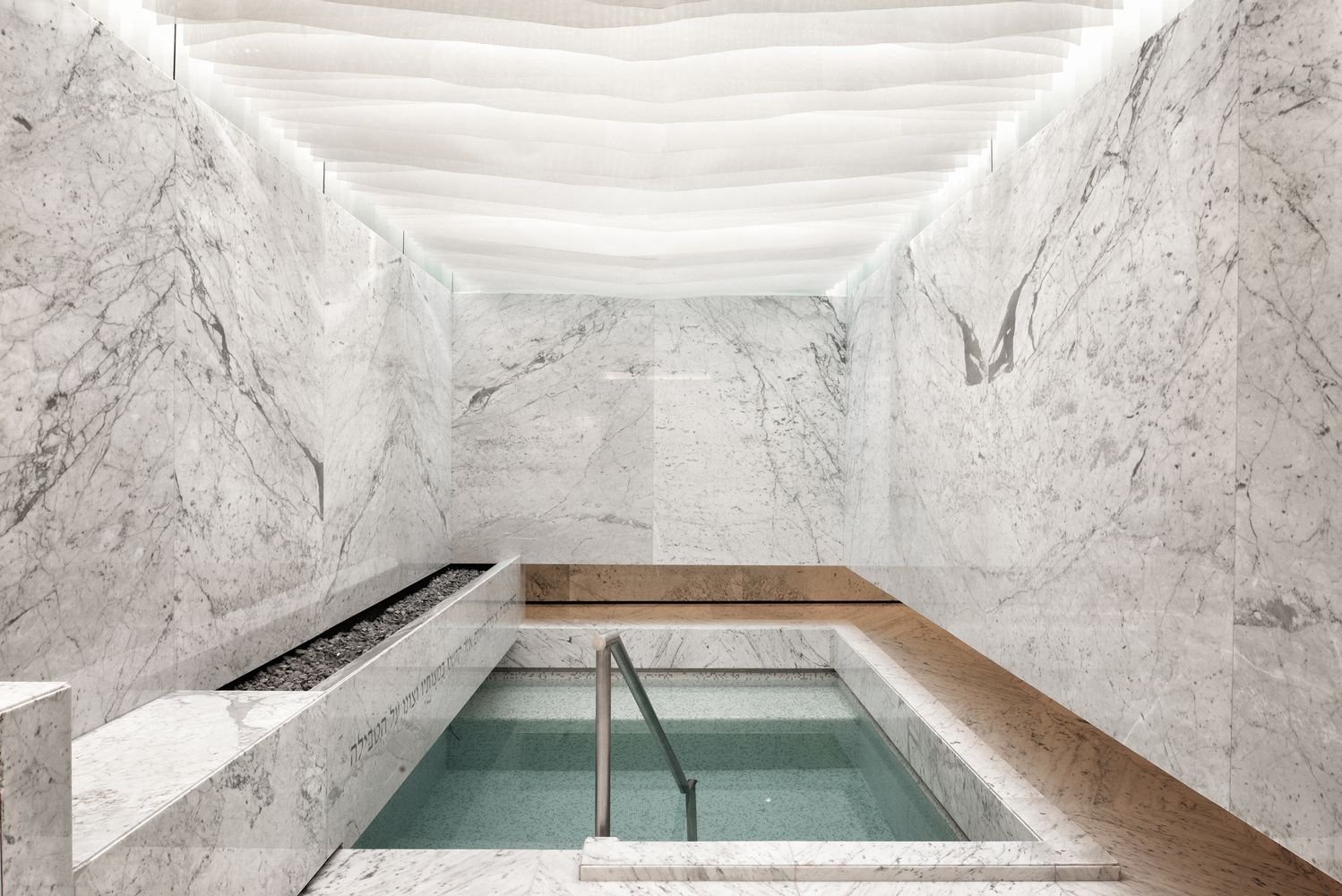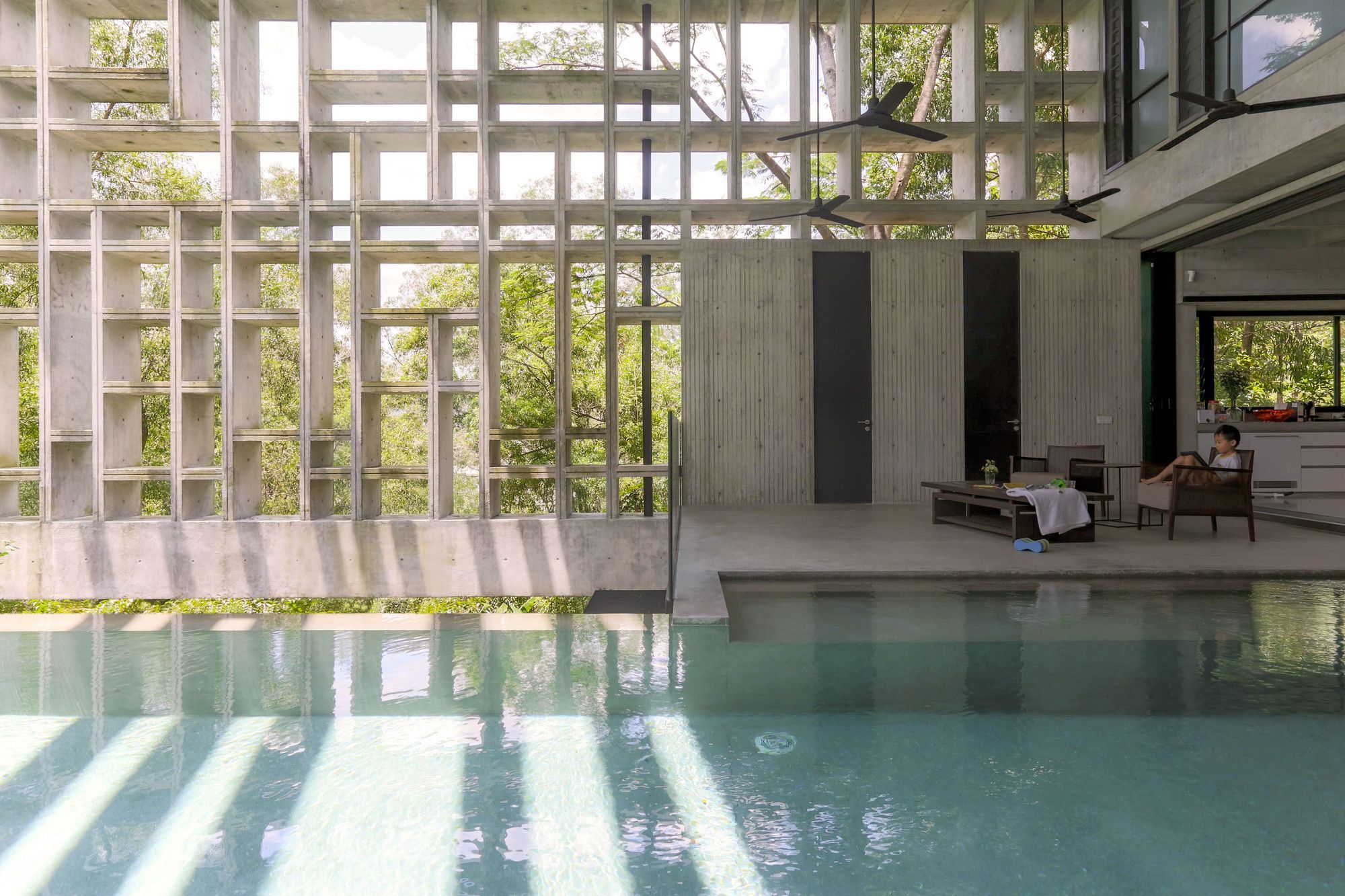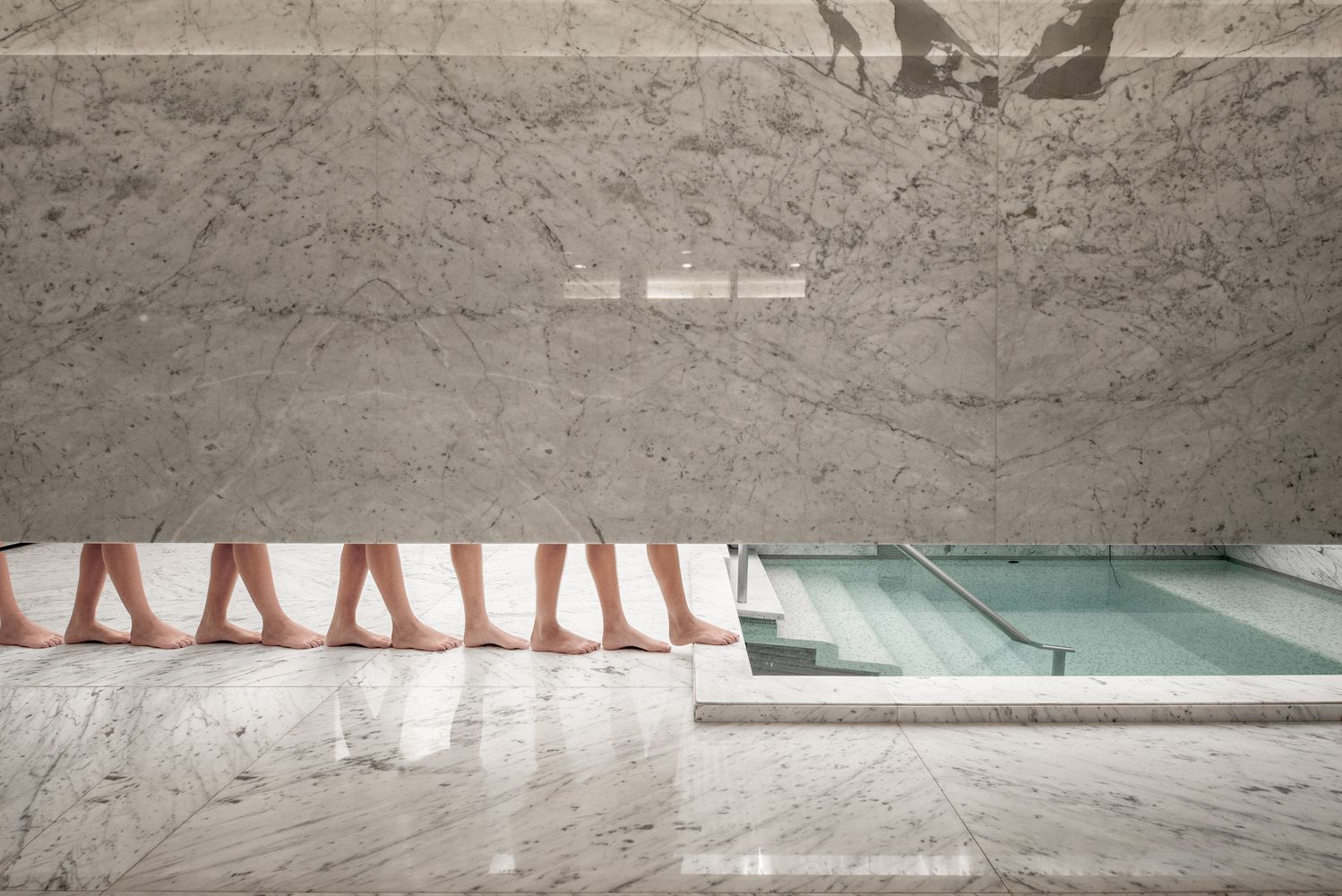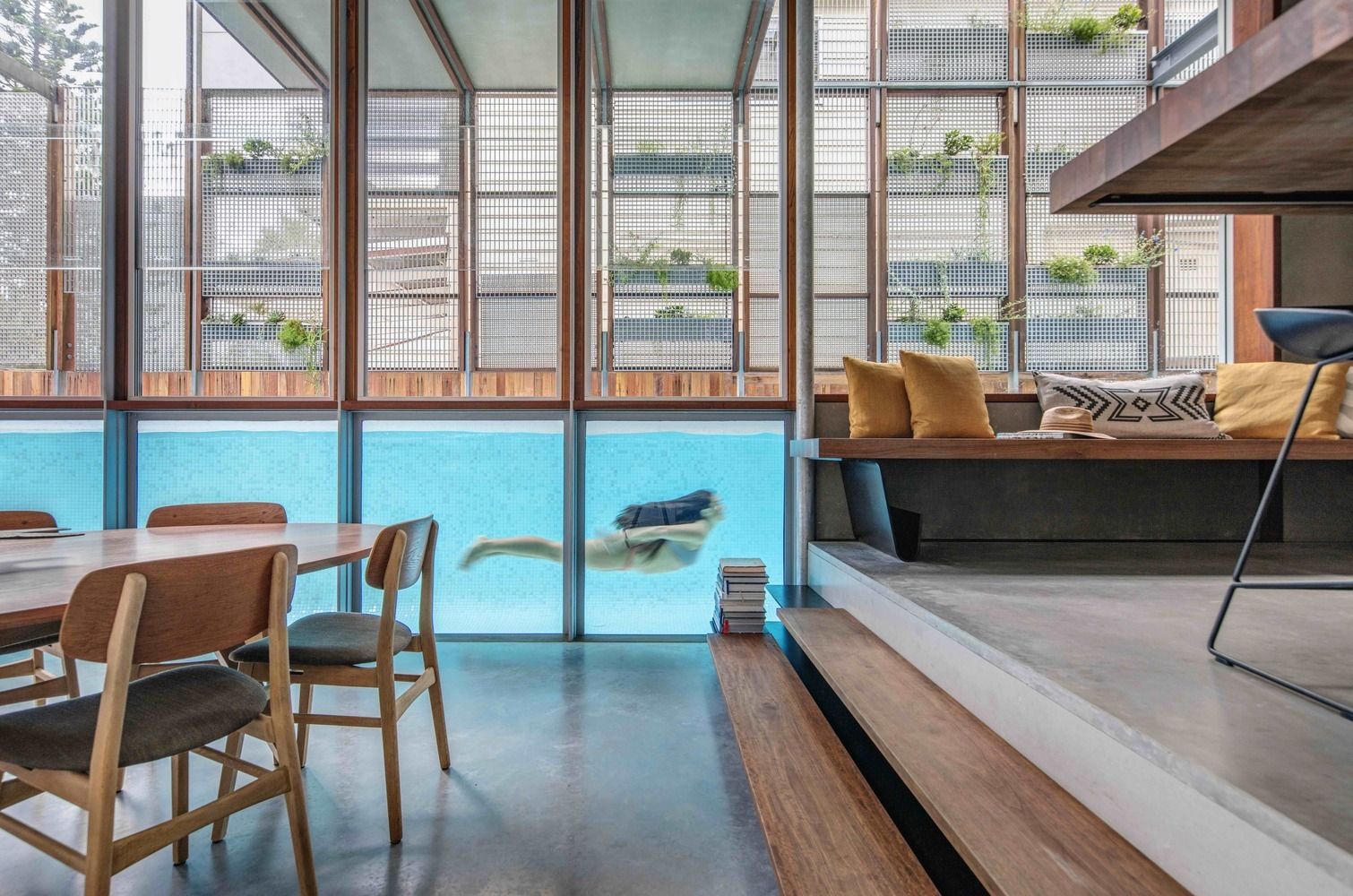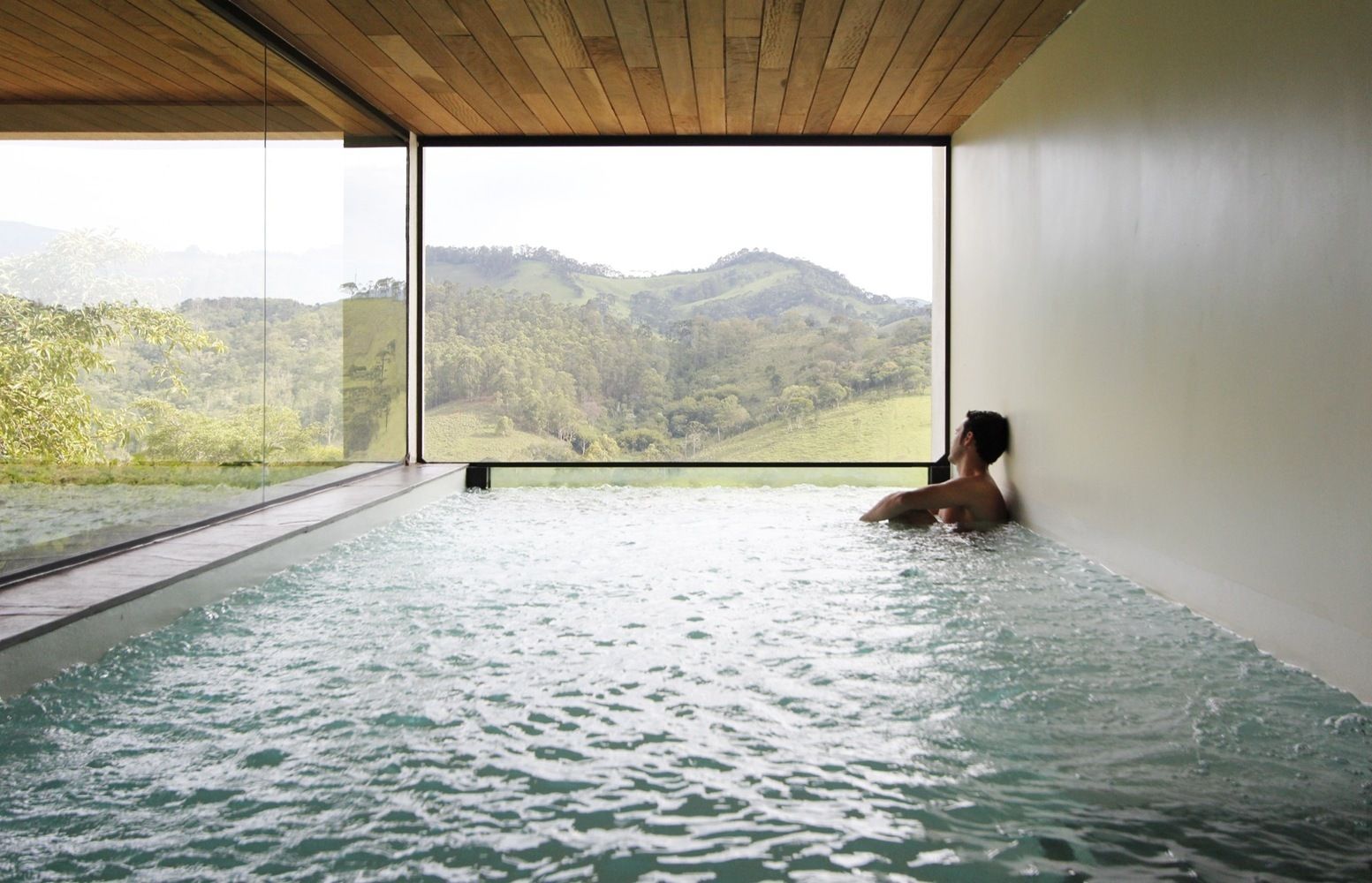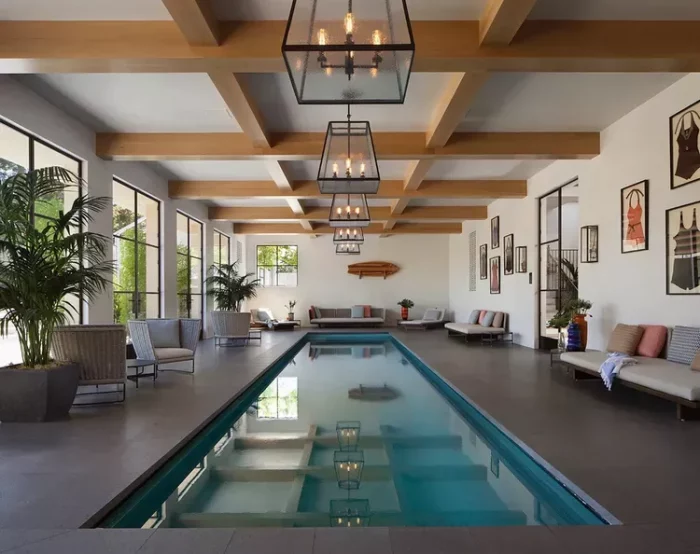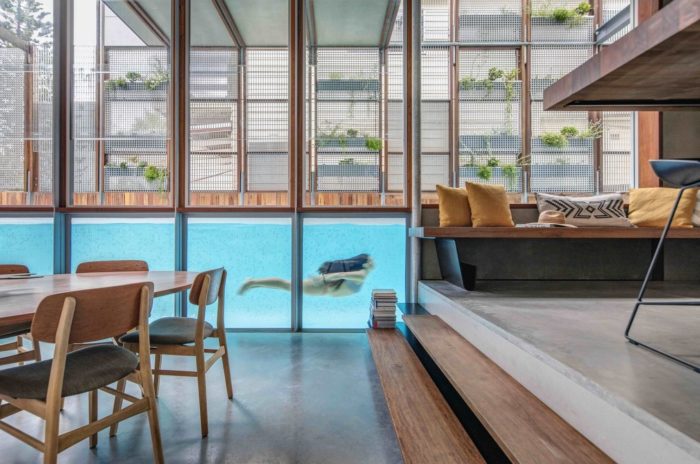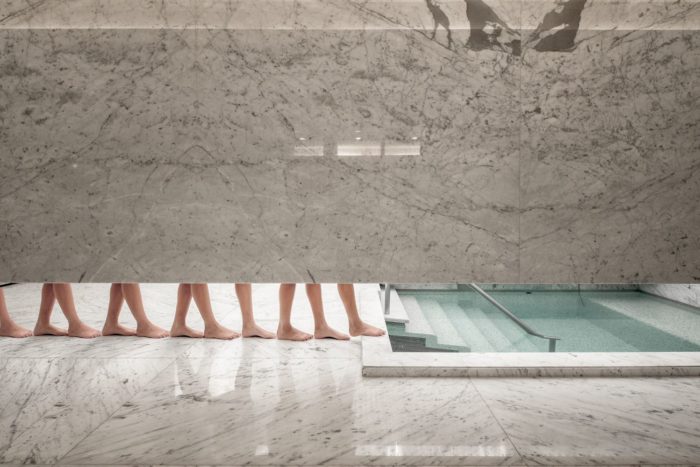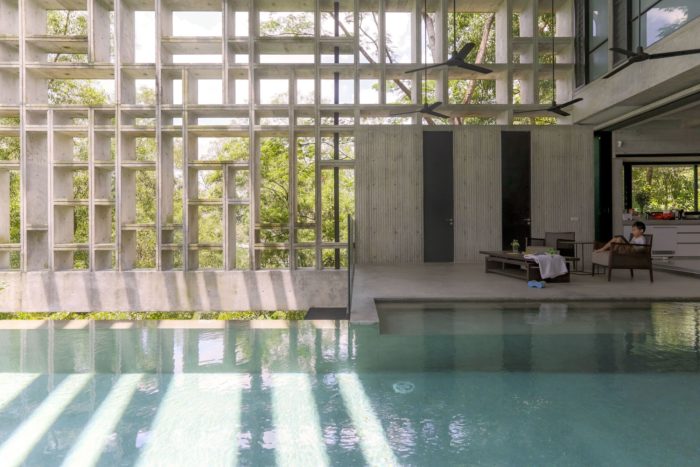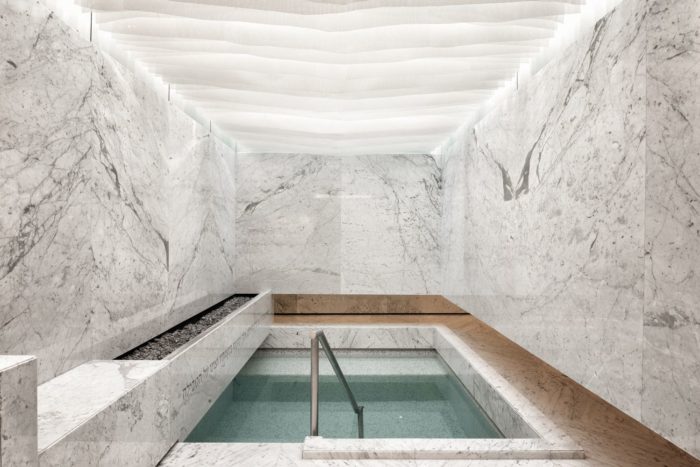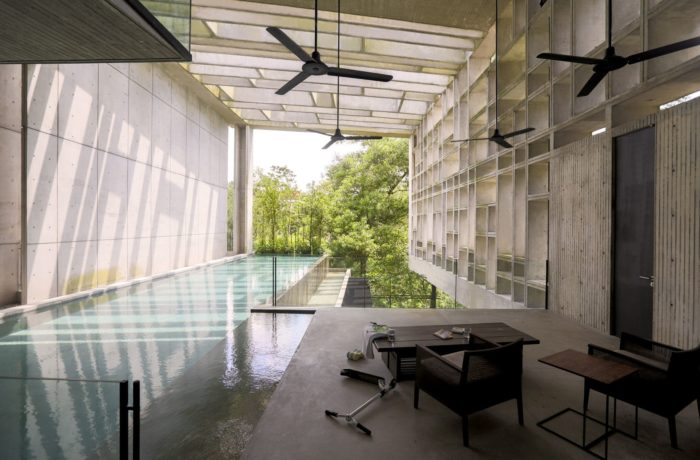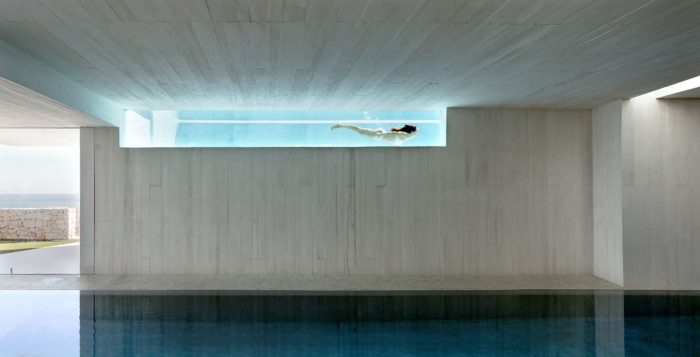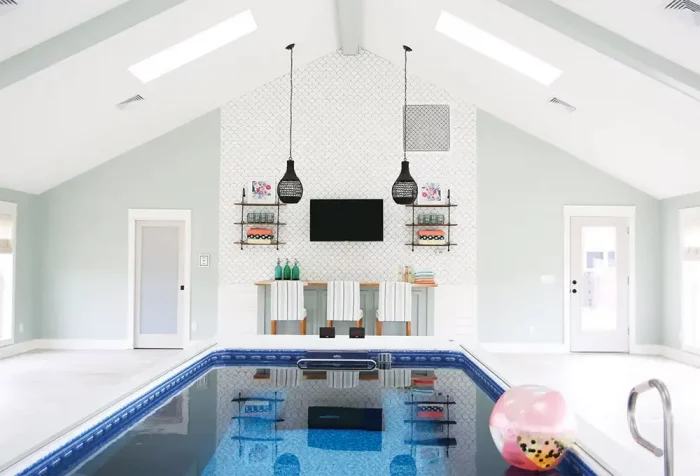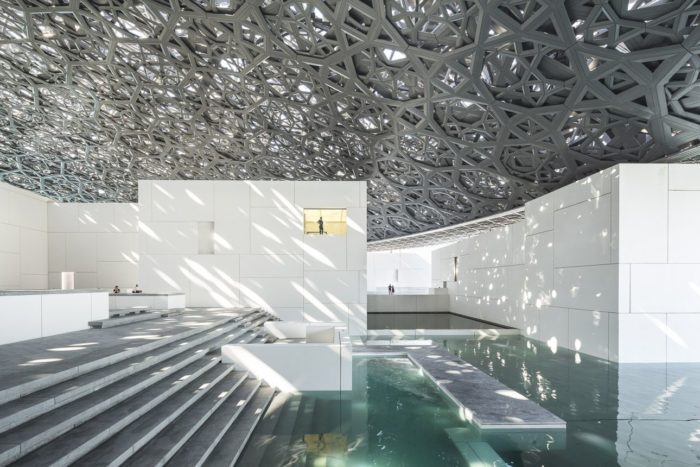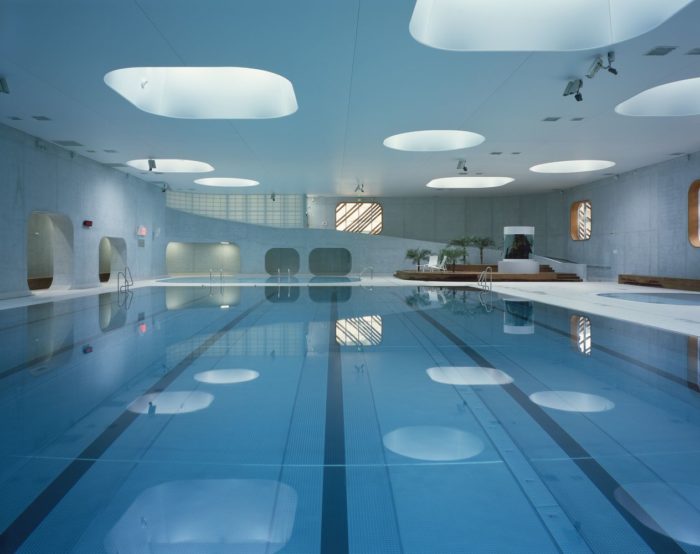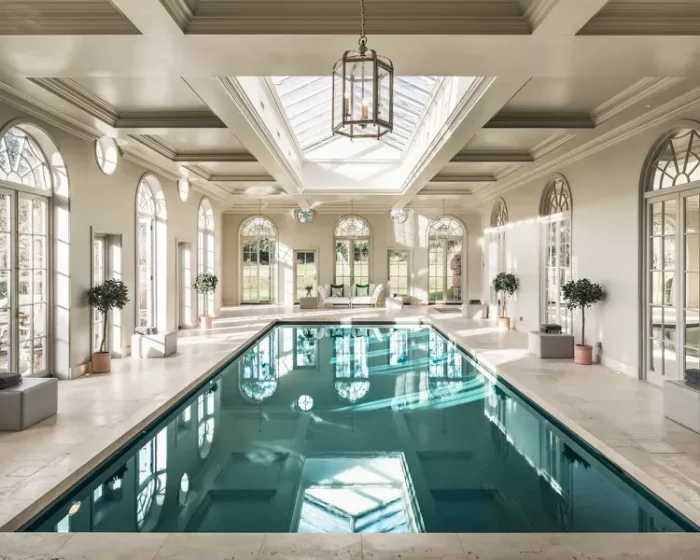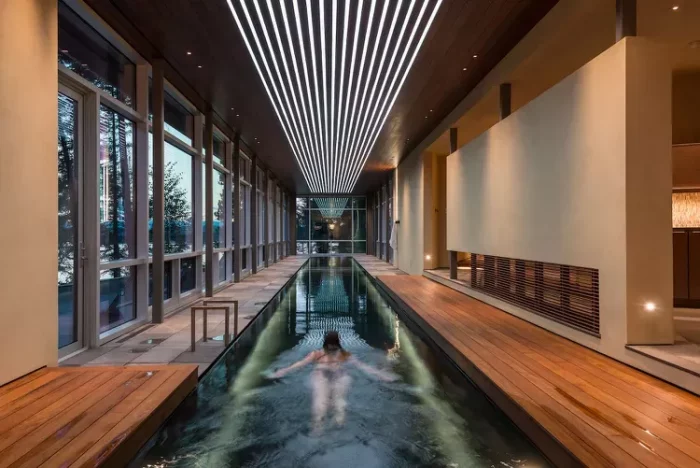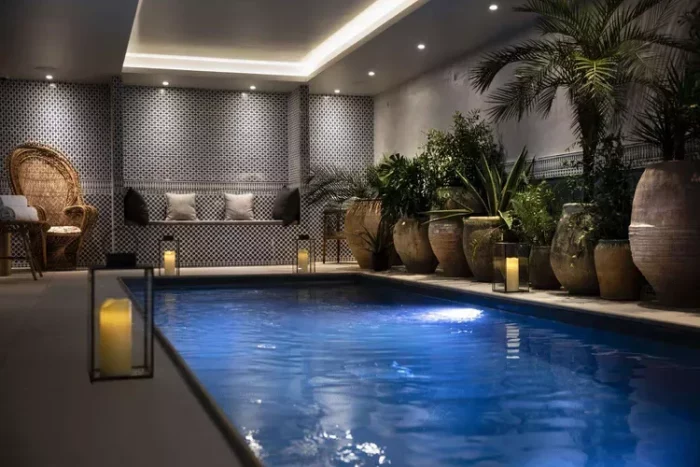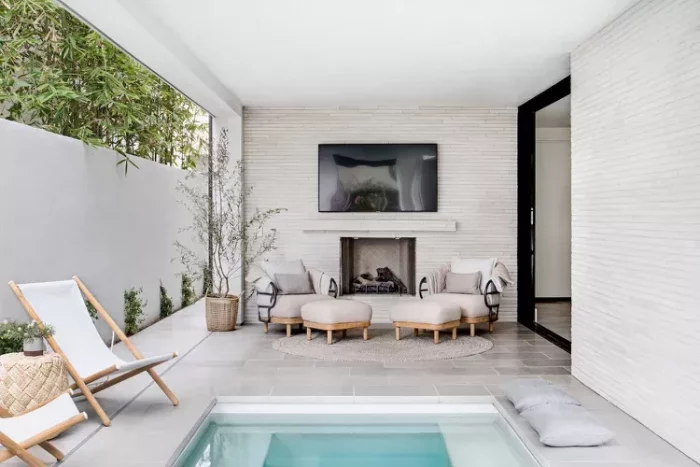An indoor pool is a pool that is enclosed within a building, providing a controlled environment for year-round use. These pools are usually heated, making them a preferred option for winter swimming and a comfortable alternative during hot summer weather. Indoor pools serve various purposes, such as swimming lessons, water aerobics, and recreational swimming, including lap swimming and water games. They can be found in multiple locations, such as hotels, gyms, recreation centers, and private residences.
1) The Benefits Of Indoor Pools
Indoor swimming pools have several advantages over outdoor ones. They can be used year-round, regardless of weather conditions. Additionally, indoor pools are less susceptible to algae blooms or water quality concerns. Here are some of the benefits of indoor pools:
- Accessible throughout the year, regardless of weather conditions.
- Less susceptible to issues like algae blooms or other water quality concerns.
- The option to be heated makes them a preferred choice for winter swimming.
- Versatile for various activities like swimming lessons, water aerobics, and casual swimming.
- It is found in diverse settings such as hotels, gyms, and recreation centers.
2) The Drawbacks Of Indoor Pools
Indoor pools typically have higher construction and maintenance costs than outdoor pools and may lack privacy as they are often situated in public structures or shared areas. Here are some of the drawbacks of indoor pools:
- Constructing and upkeeping indoor pools incur higher costs than outdoor pool counterparts.
- The privacy aspect may be compromised, given that indoor pools are frequently situated in public facilities or shared areas.
- Indoor pools often have higher humidity levels than their outdoor counterparts, potentially leading to skin issues for specific individuals.
- Cleaning indoor pools poses additional challenges as they need exposure to natural elements.
- Indoor pools require water and air heating, leading to increased expenses, especially in winter.
- Humidity can cause mold growth without proper ventilation near indoor pools.
- Potential water damage around the pool may lead to costly repairs, requiring waterproof flooring and a pool enclosure.
- Showers and washrooms: Consider the location of your indoor swimming pool for shower and changing facilities, as these may need installation for post-swim hygiene.
3) What Type Is Best For An Indoor Pool?
When it comes to inground pools, there are three primary types: fiberglass, concrete, and vinyl liner. All three are suitable for indoor swimming pool use. However, opting for indoor fiberglass pools provides a significant advantage in terms of installation speed. The pool shell can be installed within a day or two, significantly reducing the structure’s overall construction time. Additionally, the smooth texture of fiberglass pools enhances the overall bathing experience.
4) How Much Do Indoor Pools Cost?
Based on our experience, constructing an indoor swimming pool in most areas of the United States usually starts at $200,000 and goes up from there. Now, let’s quickly break down the expenses:
- The pool itself generally falls within the range of $40,000 to $60,000.
- Consider constructing a 25’x45′ (1125 sq ft) structure with an average cost of $100 per square foot, totaling $112,500.
- Installation of a dehumidification system, crucial for safeguarding the structure from moisture damage, typically ranges between $20,000 and $30,000.
- Opting for the mid-range estimates, the total cost for this hypothetical project would amount to $187,500.
5) Indoor Pool Ventilation
Air quality in indoor pool settings has received recent attention. It is essential to maintain humidity levels between 50 to 60 percent. This can be achieved either by bringing in fresh and drier air or by incorporating a well-designed dehumidification system. It is crucial to ensure that the dehumidification system is carefully planned to avoid directing air across the pool surface, as this can cause evaporation to occur more quickly. Instead, the air should be evenly dispersed along the exterior walls to prevent condensation.
Maintaining the air temperature in the enclosure two to four degrees above the pool water temperature helps reduce evaporation and enhance bather comfort. When the room and water temperatures differ, evaporation increases, leading to issues like droplets forming on windows and a sensation of rain in the room. While many prefer a pool temperature of 82 degrees, heating the enclosure to 84 or 86 degrees is impractical. A well-sized dehumidification system is crucial in such cases. Limiting the operation time of water features can significantly decrease evaporation, and plumbing them separately from the pool, as suggested by Ruddy, further minimizes their contribution to evaporation.
Proper drainage for your deck is essential to prevent water from accumulating, which can lead to increased humidity and evaporation. Instead of using traditional hub drains placed every 8 to 10 feet, a low-profile strip drain installed around the pool perimeter offers a more attractive appearance. Consider installing a radiant floor heating system to keep the deck dry and reduce evaporation. This system helps prevent standing water and ensures that your feet stay warm during the colder months.
Proper ventilation is crucial for regulating the environment of a room, especially if there are a lot of windows, skylights, or sliding glass doors, as they tend to trap heat. Moreover, chlorine, which is used to sanitize pool water, produces chloramines that have a strong odor. By strategically placing vents with the help of an experienced architect, optimal airflow can be maintained over the windows, ensuring a comfortable and livable room. I hope this version is more precise and more error-free.
6) Indoor Pool Lighting
Ensuring your indoor pool is well-lit for nighttime enjoyment and safety is essential. Although natural light from skylights, windows, and sliding doors brightens up the area during the day, sufficient lighting is necessary once the sun goes down. A combination of underwater lighting and wall sconces can provide adequate illumination and enhance the pool’s overall look. It is recommended to avoid overhead lights, as they are challenging to access for bulb replacement. If you wish to have ceiling lighting, consider using fiber-optic cable fixtures with remote illuminators for easy accessibility. According to Ruddy, the lighting should be subtle, creating the right ambiance without being excessively bright, which might attract unwanted attention through the windows.
7) Indoor Pools with Skylights and Retractle Roofs
Windows, skylights, and sliding glass doors can enhance openness but may also result in excessive heat during summer. Ruddy emphasizes the importance of opening skylights or windows to release hot air, preventing high cooling costs in summer. Alternatively, an open roof system and numerous sliding glass doors allow you to treat your indoor pool like an outdoor one in the summer. To prevent window fogging, ensure continuous airflow by placing vents in both the floor and ceiling near each pane, providing a clear view.
8) What Pool Accessories Should I Consider With An Indoor Pool?
1- Automatic Pool Covers: The value of investing in automatic pool covers is debatable. However, it is a practical choice for indoor pools. Ensuring proper moisture control is essential for the long-term durability of any pool structure. Automatic covers are an effective solution to minimize evaporation and keep the water within the pool, reducing water loss to the surrounding air. Moreover, these covers are highly beneficial in conserving the energy utilized for heating the pool water.
2- Pool Heater: Since indoor swimming pools lack direct sunlight, an alternative method is needed to heat the pool water. The conventional choice for indoor pools is a natural gas or propane heater.
9) Are Indoor Pools Easier To Maintain?
Keeping indoor pools clean and well-maintained is usually easier than outdoor swimming pools. This is because indoor pools are protected from dust and debris found in open spaces. Moreover, the temperature of indoor pools can be regulated, which helps to avoid the impact of extreme weather conditions and reduces maintenance costs.
10) Conclusion
If you’re considering adding an indoor pool to your home, keeping certain critical factors in mind is essential. Firstly, choose the type of pool that best suits your preferences, as each kind has advantages and disadvantages. Secondly, decide on the optimal location for the pool; although indoor pools can be placed in various spots, some sites may be more suitable.
Thirdly, obtain the necessary permits and approvals from your local government, as building an indoor pool requires official authorization. Fourthly, hire a qualified contractor with experience in constructing indoor pools. Given the project’s complexity, relying on skilled professionals is crucial. Fifthly, plan for the financial aspect of the pool, considering both the construction and maintenance costs, as indoor pools can be a substantial investment.
